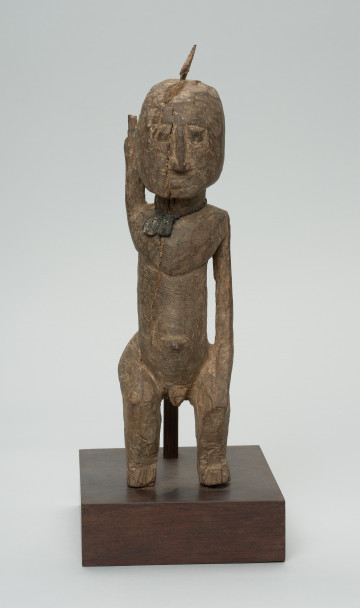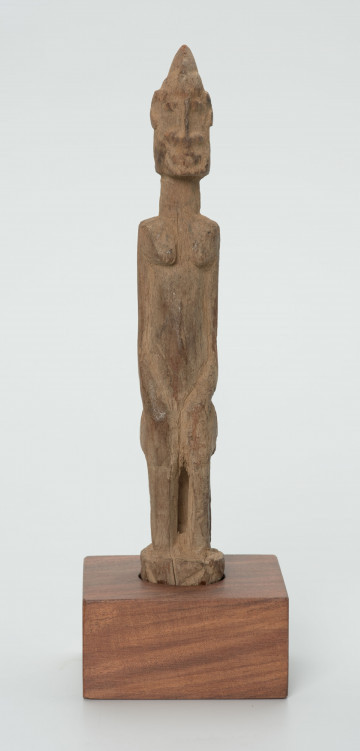
Figure - ancestor
między 1951 — 2000
National Museum in Szczecin
Part of the collection: Collection of Dogonian art
The Dogon believe in Amma, the creator god, but they also have numerous cults, including the cults of the ancestors (Wagem) and masks (Awa), as well as the cults of life: Lebe, built around the cult of the ancestor Lebe embodying the forces of the earth and vegetation, and Binu, in which the first ancestor who descended from the ark to earth is commemorated. They place their faith in continuous rebirth, which enables them to participate in the Sigi festival, held once every sixty years. The first Sigi was celebrated as a propitiatory ceremony to restore the old order that had been disturbed by the improper handling of masks. The festival began in the village of Yougo Dogorou, and then was held in other villages one by one. The last Sigi began in 1967 and ended seven years later. Especially for this festival, each village makes an imina na mask, also called the Great Mask. It is not danced in, but placed in the middle of the square where the men dance. It symbolises the snake, and indirectly Lebe, who has been reborn in his form. During the festival, men pass through a gate symbolically marked by long stalks of plants. It is believed that crossing the gate is equivalent to being born again. In their elaborate rituals, the Dogon use Sigi-so, a language belonging to the Mande group of languages, known only to certain men with important functions. The knowledge explaining the creation of the universe, the Earth and the origin of the ancestors, passed on orally, is available to a small group of initiates. The Dogon have a strongly developed cult of ancestors. There are two levels of ancestors: the old dead as the creators of the order of things (eighty men and women, descended from eight descendants of the first couple) and all the other dead, who are the guardians of the traditions and rules established by the first eighty.
Ewa Prądzyńska
Author / creator
Dimensions
cały obiekt: height: 19,1 cm, width: 5,5 cm
Object type
figure
Creation time / dating
Creation / finding place
Identification number
Location / status

między 1951 — 2000
National Museum in Szczecin

między 1901 — 1950
National Museum in Szczecin

między 1951 — 2000
National Museum in Szczecin
DISCOVER this TOPIC
National Museum in Szczecin
DISCOVER this PATH
Educational path